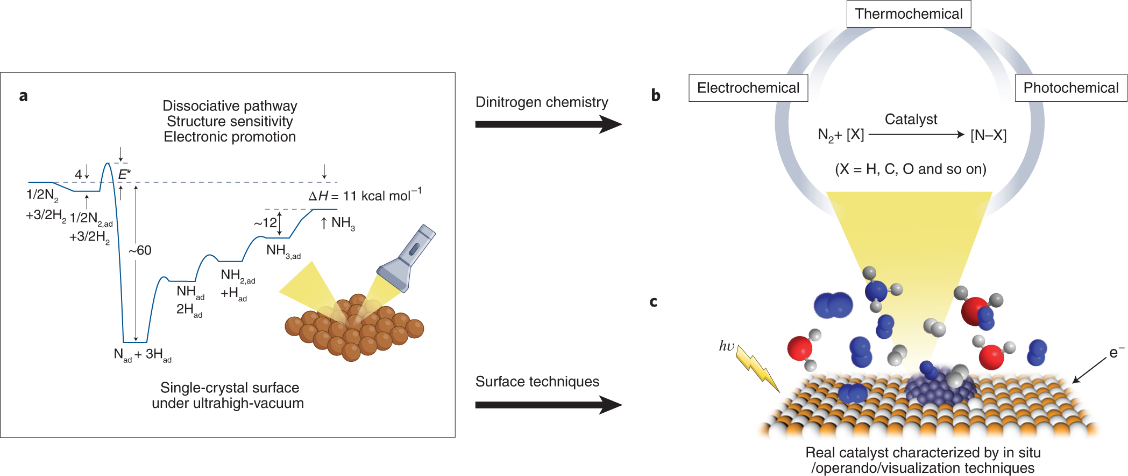Prof. Chen and Prof. Guo were recently invited to publish a retro News & Views article on Nature Catalysis, titled “Ammonia history in the making”. In this article, the authors highlighted the significant contribution of Prof. Gerhard Ertl to the fundamental understanding of ammonia synthesis and provided a brief perspective on the trend in dinitrogen chemistry.

Ammonia synthesis via the Haber–Bosch process plays a major role in the production of nitrogen fertilizers. The mechanism of the catalyst has long been a central research topic. With the advent of surface-science techniques, Prof. Gerhard Ertl and his co-workers elaborately carried out a set of model studies that eventually culminated in a detailed picture of the ammonia synthesis at iron surfaces in the 1970s. These in-depth understandings more than 40 years ago remain the predominant viewpoint today. The adopted surface-science approach laid the methodological foundation for probing the mechanisms of many other important catalytic reactions.
Ammonia synthesis is still a vibrant research topic today. In fact, ammonia synthesis under mild conditions remains a grand scientific challenge. And future ammonia production calls for alternative green synthesis approaches driven by renewable energies. Beyond ammonia, synthesizing N-containing chemicals such as aniline directly from N2 is a fascinating and even more challenging task that requires the development of efficient catalysts and processes. To this end, advanced surface-science investigations will undoubtedly continue to provide in-depth understanding and knowledge to tackle those upcoming challenges in the catalytic fixation of dinitrogen. (Text Jianping Guo)
Article link:https://doi.org/10.1038/s41929-021-00676-0

